England's Marcus Smith era begins against Australia - the hype is justified
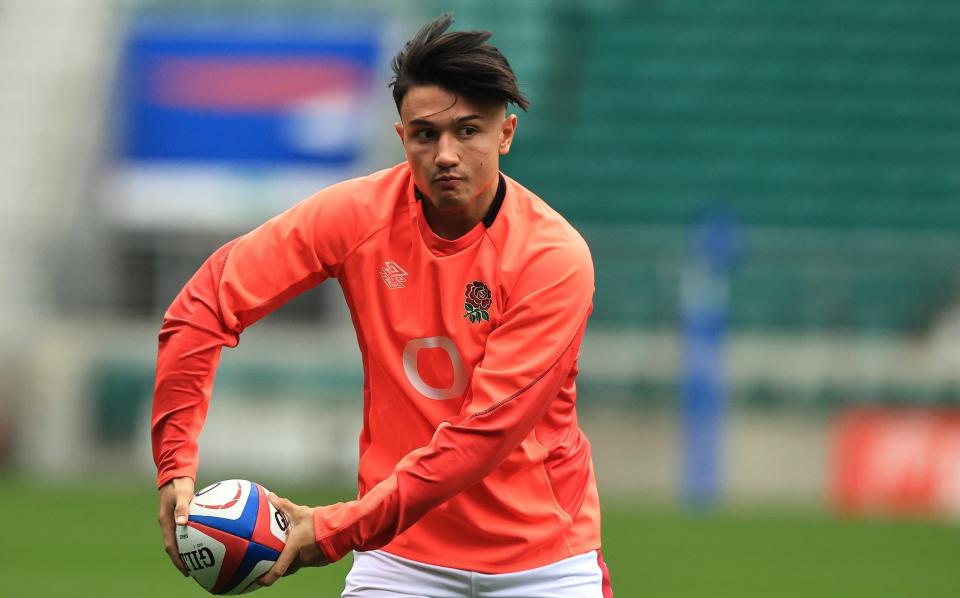
Owen Farrell is not one for indulging in hyperbole. So when you listen to the England captain waxing in such lyrical terms about the potential of Marcus Smith, it is safe to say there is significant substance behind all the hype.
The visit of Australia to Twickenham on Saturday is already remarkable for two red-letter moments. Maro Itoje will lead the England team onto the pitch to mark the occasion of winning his 50th Test cap for his country, while the 30-year-old Farrell will make his 100th Test appearance, including six for the Lions.
Yet Saturday is all about Smith, no matter how much England head coach Eddie Jones attempts to keep a lid on the attention directed towards the 22-year-old.
In the crowded international fixture list, there are not many days when it genuinely seems like the start of a new era. But Smith’s first start against a 'Tier One' country on Saturday feels just like that.
Jonny Wilkinson’s first start at fly-half came against Australia 23 years ago and Saturday's game against the Wallabies could prove to be equally as seminal.
It is a day that has been coming ever since Jones first brought Smith into his camp as an apprentice for the autumn campaign four years ago. The England coach resisted the opportunity to fast-track his elevation until his form at the end of last season proved irresistible, when his attacking genius spearheaded Harlequins to victory in the Premiership final. A first cap against Canada ensued, followed by a late call-up for the Lions in South Africa when Finn Russell was injured.
It is a rapid development that has hugely impressed Farrell, who was first given the keys to England’s No 10 at the age of 20 before playing most of his international career at inside centre.
"Marcus loves his rugby, working the game out, chatting about it – how to control games, get the best out of people, improve, but probably the most special thing is his ability to unlock a game on his own,” said Farrell.
"His ability to control a game and his team, but with a sharpness to rip a game open in a blink of an eye is something hopefully he keeps going. Obviously he’s just started, but hopefully he keeps that going for the rest of his career.”
Farrell knows more than most the challenge of translating club form onto the international stage, but as Smith showed in his mesmerising cameo against Tonga last Saturday, he appears to be unencumbered by fear or overburdening instruction from above.
"Marcus runs the attack, he’s been brilliant so far,” Farrell added. “He’s obviously been playing unbelievably well and he’s come in here and put his stamp on it. He’s been running the show in terms of attack and he’s been flying this week in training.
"He’s a fantastic player and he’s been showing that for a good while now. It’s been good working together in camp. To build up a bit more of a relationship that we have had over the last few weeks has been good.”
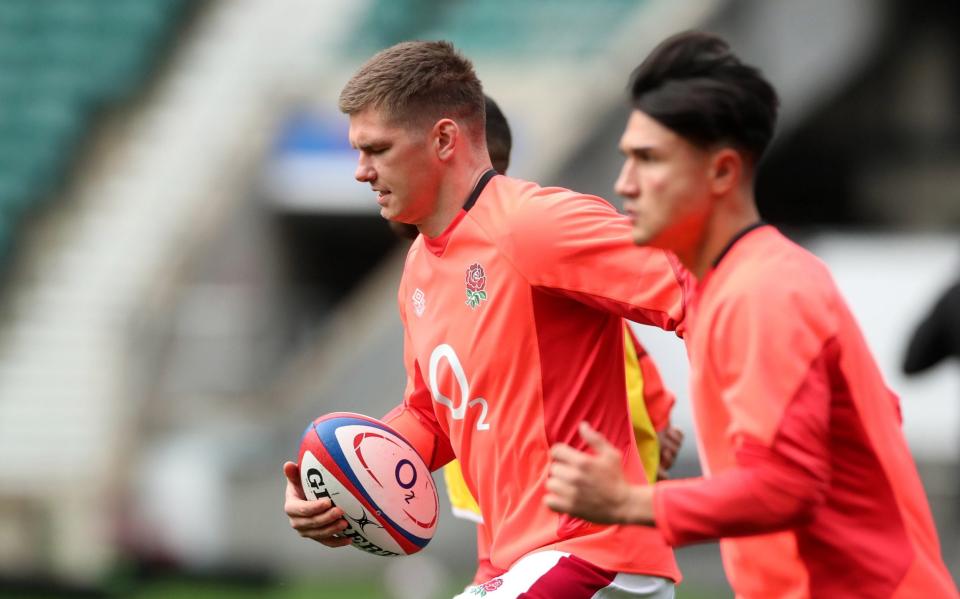
But what makes Smith such a special talent? England have enjoyed a supply chain of superlative 10s in recent years – Danny Cipriani, Farrell and George Ford. What makes Smith such a potent talent is that he appears to have harnessed the best of all three – Cipriani’s innate attacking flair, Ford’s vision and Farrell’s competitive zeal and game management.
He can kick off both feet, pass off both hands and, given his relatively diminutive stature, spent his formative years attempting to manipulate defences rather than look for contact; heads-up rugby that was first encouraged as a boy when he played for the Centaurs RFC in Singapore and then at Brighton College under the expert guidance of Nick Buoy.
But Smith was not a schoolboy star content with that status. He knew he had work-ons - defence and speedwork - and sought advice - including from Farrell, Ford and Cipriani - about how to improve.
Russell Earnshaw, the Rugby Football Union’s former international performance coach, still remembers first setting eyes on Smith as a 16-year-old during an academy training session at Harlequins. Earnshaw was new to the job and reached immediately for his phone to call John Fletcher, England’s legendary age-group coach.
“Whenever he got the ball he was running at pace and he was fixing defenders,” recalls Earnshaw.
What impressed Earnshaw was Smith’s ability to constantly provide answers to problems they would throw at him.
“We would make him wear a ‘target shirt’ in training and defenders would earn extra points to get a shot on him,” Earnshaw adds. “We would try to frustrate him and put him off his game by getting team-mates to give him incorrect information and see if he could work it out, correct it and communicate that with others to see what his leadership was like. He would solve problems, particularly in attack.”
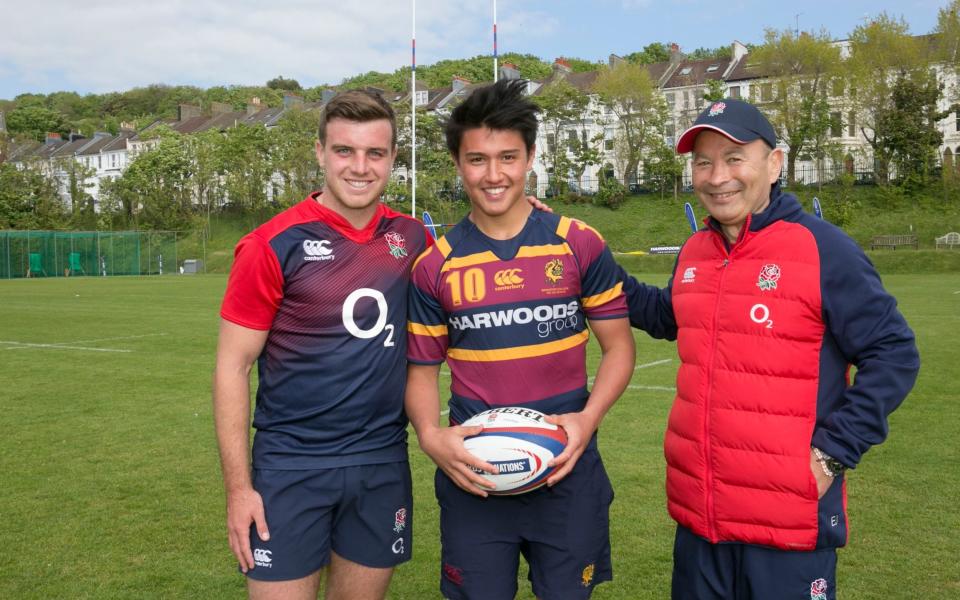
Of all his attributes, it is Smith’s “ability to scan” that most excites Earnshaw - and Farrell.
“When he made a break against Tonga last weekend, I could see it three seconds before it happened because I know what stuff he is looking for,” Earnshaw says. “He could see they had a defender who was quite tight and was looking tired.
“Because he is so skillful, his ability to scan is what separates him. Because of his skillset, he is constantly checking for gaps, the backfield, looking for things because he has the ability to attack those areas.”
The challenge now is to translate his club form on to the international stage, but Farrell is confident.
"I don't think he needs encouragement,” he added. “We will try and help each other as much as we can on the field. As far as him being himself, as far as him getting his game out there on the pitch, I don't think that's something that people need to worry about.”
Success story or train-wreck? What the science says about Marcus Smith and Owen Farrell partnership
by Charlie Morgan
Fittingly, at the end of a week in which Emma Raducanu has led English rugby union’s news agenda, Ben Darwin reaches for his own tennis analogy to explain the significance of cohesion as it pertains to the fledgling midfield combination of Marcus Smith and Owen Farrell.
“The Bryan brothers [Bob and Mike] are a magnificent doubles team, but not the best individuals,” he says. “Let’s put them against Rafael Nadal and Roger Federer.
“Nadal and Federer would have to overcome some things. They’d have to adjust to court changes. They’d have to learn how to serve in doubles, and how to manoeuvre two people around the court rather than one. And then figure out who takes a shot when the ball comes down the middle of them.
“Habits are really hard to undo. But the question wouldn’t be ‘will they win?’ It would be ‘how many games would it take for them to win?’ It might take them 11 matches. From that point on, they’d probably never lose. But after they’ve lost the first five matches, do you panic and f---ing change things?”
Darwin, a former prop who played under Eddie Jones for the ACT Brumbies and Australia before embarking on a career in coaching and performance analysis, founded GAIN LINE Analytics in 2013. His company is an operations and management consultancy that interrogates data to determine the quality of human connections within an organisation.
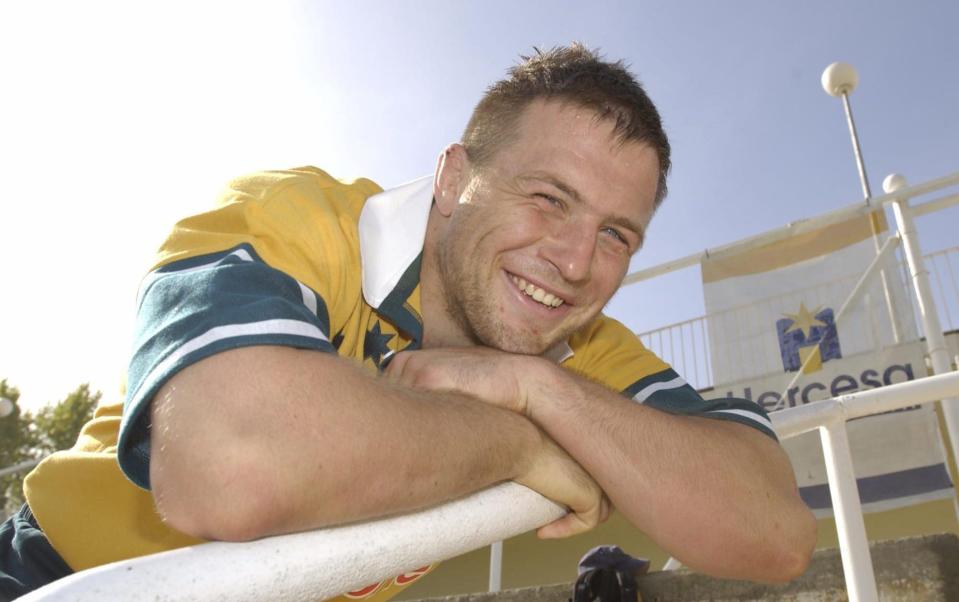
A conversation with Darwin unearths intriguing titbits. When a team wears an alternative shirt, he says, their attacking returns generally drop by 40 per cent. The unfamiliarity causes players to flinch as they look for offloads. Defence is not as affected by kit changes because individuals are focussing on opponents.
New Zealand’s grey-clad loss to France in the Rugby World Cup 2007 quarter-final is one example of this principle. Darwin believes Ireland are worth a punt for World Cup glory in 2023 if they continue to tap into Leinster’s cohesion. He was more impressed by their 60-5 thrashing of Japan in Dublin because it was achieved in spite of jarring purple jerseys.
Concerningly for England supporters waiting to watch Manu Tuilagi on the wing, positional changes can be debilitating for cohesion according to GAIN LINE’s models. Jerome Kaino’s one and only Test start at lock, as well as the lack of shared experience between centres Ryan Crotty and George Moala, was a precursor to the All Blacks’ 40-29 loss to Ireland in Chicago five years ago.
Darwin’s own relationship with Jones has not always been smooth, but he is not about to add his voice to the most common criticism of his countryman: that Premiership performances do not seem to matter.
“The nature of English sport is that people are impatient because there is always someone else,” Darwin says. “People bagging on Eddie for not picking on form… you should never pick on form. ‘Form’ is the context of them playing in a different environment that has nothing to do with England.”
Jones’ reliance on foundations built by Stuart Lancaster has been shrewd, Darwin suggests, because a 13-club system is “fundamentally disadvantaged” compared to regional, provincial and franchise systems. The all-action union of Tom Curry and Sam Underhill is probably the only completely new combination blooded by England since 2015. That does not surprise Darwin.
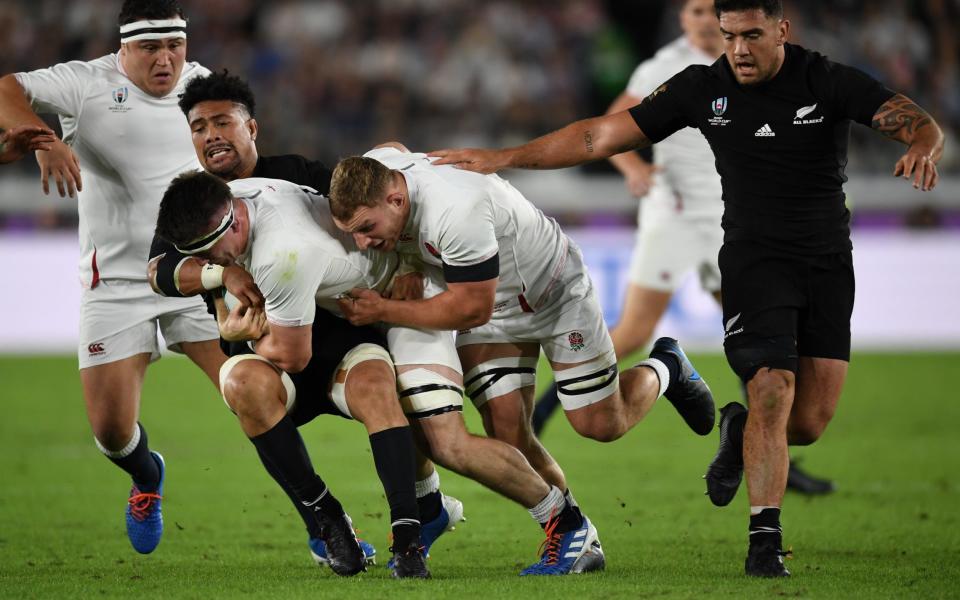
“People say Scotland, Wales and Ireland are underdogs because people look at resources,” he says. “I look at England as underdogs. For them to win a World Cup, everything has to go right – absolutely perfectly. And even then, they are pushing uphill.”
“With the All Blacks or Ireland or Scotland, you could lose a whole team and still have cohesion because there are so few clubs,” he adds. “With England, once you get beyond a squad of 23, it would fall off a cliff.
“It isn’t a system that regenerates well. It collapses, and you can see that in the ups and downs of England’s form over the last 20 or 30 years.”
GAIN LINE say World Cup winners tend to fulfil at least one of three selection criteria. The first is harnessing club cohesion. The second, as South Africa did in 2019 by assembling and maintaining a core of players and coaches with shared experience at the Stormers, is to be “ridiculously consistent” for the 18 months leading up to the tournament. Lastly, as was England’s method in 2003, you keep a largely familiar group together for two whole cycles.

And so, to Smith and Farrell. Time in training, both under Jones and with the British and Irish Lions, will have helped in the same way that emerging nations – plus ‘big system’ nations like England and France – tend to perform better at World Cups after long camps. Australia’s own midfield reshuffle, following the withdrawals of Quade Cooper and Samu Kerevi, is another consideration.
“Nothing clicks straightaway,” Darwin says. “It might look like [Smith and Farrell] do, but ‘clicking’ means that they are able to perform well under duress, and that is not possible. If they do well against a poor team, they are not clicking. They’re just not being tested.
“In any relationship, from all the research we do, the first game is generally the worst. But that is comparative to what they are up against. It could work, but it is also about the context of attacking Australia’s weaknesses.”
Hierarchy is another potential limitation. “Marcus Smith is likely to do whatever Farrell tells him to do because of his lack of experience at Test level,” Darwin continues, before delving into the archives for another convincing case study. Australia’s 76-0 thrashing of England in 1998 was Stephen Larkham’s first start at fly-half after 12 caps that had largely come at full-back.
“When you win a game like that, destroying a team that is theoretically competitive – ignoring who’s in the team and how it is built and just saying ‘we beat England’ – it creates a lot of momentum. Thirteen of the starting XV played in the World Cup final a year later.
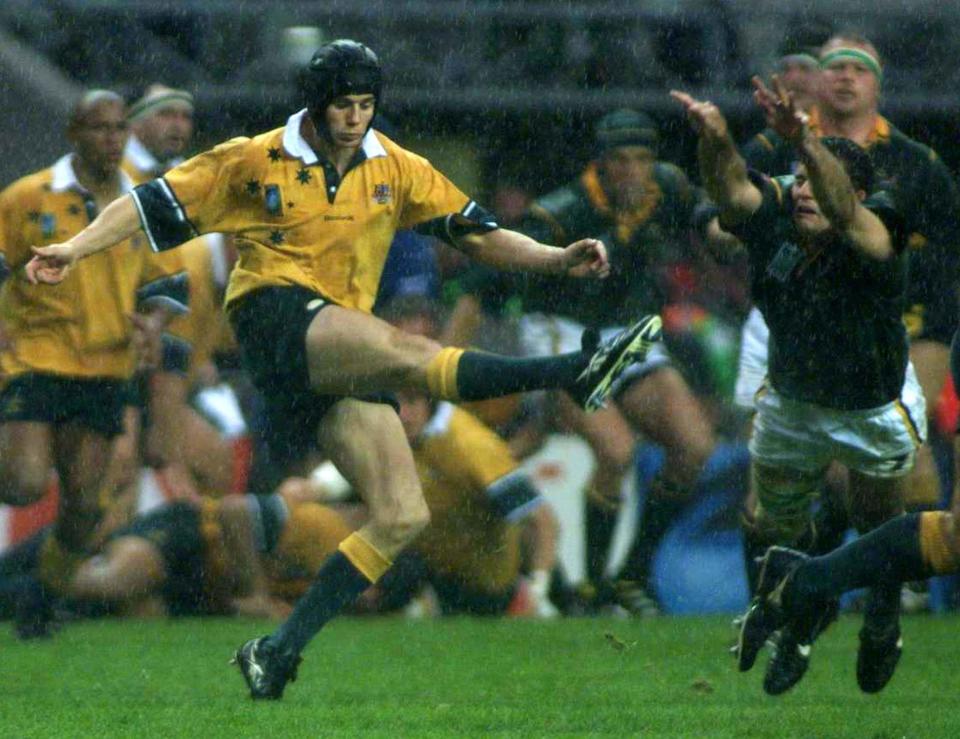
“Larkham came up against a terrible defensive line and looked amazing. Let’s say they played against the All Blacks and lost by 20. They might have decided that Larkham at 10 was a bad idea.”
Darwin argues that high cohesion manifests itself most tangibly in defence. England gradually grew tighter while confronting duress on that infamous ‘Tour to Hell’. After shipping 76 points in Brisbane, they conceded 64 to New Zealand in the first Test. In the second Test, the All Blacks scored 40. In the final Test of the trip, against a South Africa team that went on to win that year’s Tri Nations, the score was only 18-0.
“England couldn’t change their team in 1998. They couldn’t drop them all and send them home, so they kept them together. Because they kept them together, they defended better.
“My point to this is that so much of what is going to happen with this [Smith and Farrell] is about what they are up against. It can go quite well and buy them time, or it could be an absolute train-wreck.”
Seeing Smith and Farrell together this autumn has obviously been a priority for Jones. But, if he is serious about developing the combination, he will look beyond the Wallabies this weekend.

 Yahoo Sport
Yahoo Sport 





































